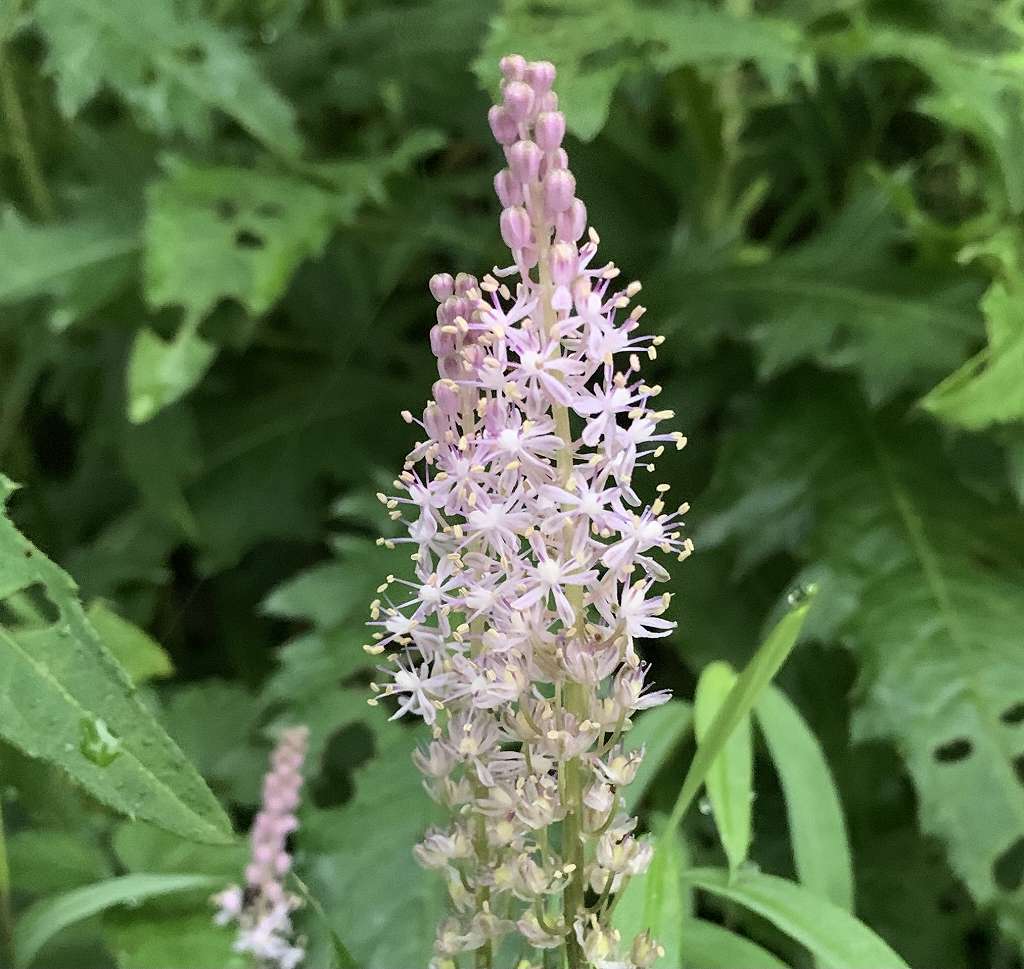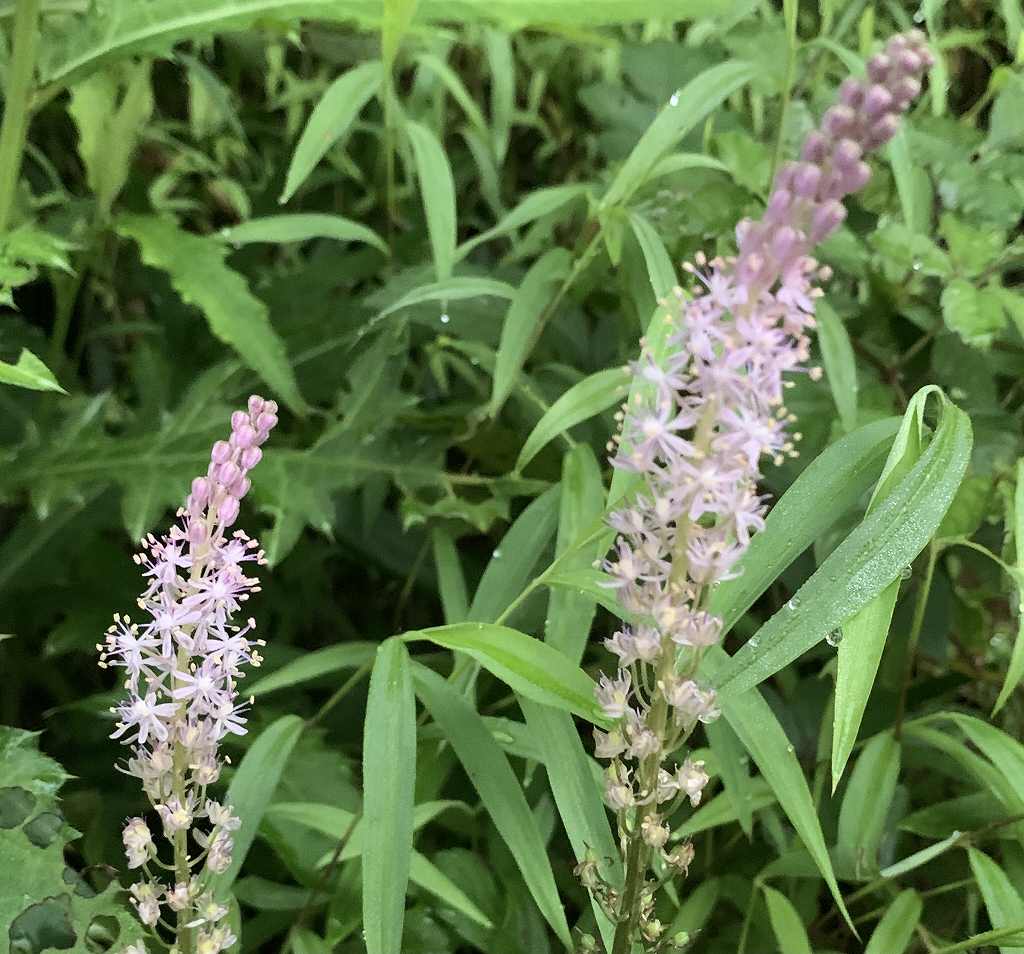ツルボは昔の公家が宮中に赴く際に使っていた傘に、花穂の形が似ているので別名「参内傘」。花言葉も「流星のような」「風情ある」です。
Japanese jacinth is also known as the “Sandai Umbrella” because the shape of the flower ears is similar to the umbrella used by the old nobles when they went to the palace. The flower language is also “like a meteor” and “tasteful”.
【仮名】ツルボ, スルボ, サンダイガサ
【和名】蔓穂, 参内傘
【英名】Japanese Jacinth, Barnardia Japonica
【学名】Barnardia Japonica
【誕生】05/ 30, 05/ 31, 09/ 03
【開花】08, 09月
【花色】Pink



ツルボ
ツルボの自生
ツルボはキジカクシ科の多年草です。世界中に100種ほどあるツルボ属のうち、東アジアに分布する唯一の種。日本では北海道から沖縄まで広く自生しています。丘陵や海岸、林縁、路傍や堤防、墓地など、日当たりの良いところを好み、群生することも。「スルボ」とも呼ばれます。
ツルボの生育
ツルボは葉が1年に2回出ます。地下には卵球形の鱗茎があり、地中に張る根は細く多く、地上に伸び出す葉は厚く軟らかく線形。葉はまず、春に5~10枚ほど出て夏に枯れますが、初秋に再び2~3枚ほど出ます。そして、葉と葉の間から花茎が立ち上がり、花穂の下から順に開花。
ツルボの名前
ツルボは蔓性でないのに漢字で「蔓穂」です。これは恐らく呼び名が定まった後に漢字が当てられたから。一説によると、群生しているところは花穂が連なって見えるので「連穂」(ツラホ)から転じたそうです。また、鱗茎の皮をむくとツルツルなので「つる坊主」から転じたとも。
ツルボの花言葉
ツルボは、昔の公家が宮中に赴く際に使っていた柄の長い傘に、花穂の形が似ているので別名「参内傘」。花の様子から花言葉も「流星のような」「風情ある」です。また、「誰よりも強い味方」「不変」「志操堅固」「我慢強い」といった強い意味の一方、「寂しさ」「悲しみ」も。
Japanese Jacinth
Japanese jacinth is a perennial plant of the Asparagus family. Of the 100 species of Barnardia in the world, the only one distributed in East Asia. In Japan, it grows widely from Hokkaido to Okinawa. They like hills, coasts, forest edges, roadsides, embankments, graveyards, and other sunny places, and can grow in clusters. Also known as “Surubo”.
The leaves of Japanese jacinth come out twice a year. There are oval-shaped bulbs in the basement, the roots that stretch in the ground are thin and many, and the leaves that extend to the ground are thick, soft and linear. First, about 5 to 10 leaves come out in spring and die in summer, but about 2 to 3 leaves come out again in early autumn. Then, the flower stalk rises from between the leaves and blooms in order from the bottom of the spike.
Although Japanese jacinth is not a vine, it is a Chinese character for “vine ears”. This is probably because the Chinese characters were applied after the name was decided. According to one theory, the flower ears appear to be continuous in the clustered areas, so it seems that they changed from “ream ears” (Tsuraho). Also, when the bulbs are peeled off, they are slippery, so they changed from “Tsurubozu”.
Japanese jacinth is also known as the “Sandai Umbrella” because the shape of the flower ears is similar to the long-handled umbrella used by the old nobles when they went to the palace. From the appearance of the flowers, the flower language is also “like a meteor” and “tasteful”. In addition, while there are strong meanings such as “stronger ally than anyone”, “immutable”, “stubbornness”, and “patient”, there are also “loneliness” and “sadness”.


